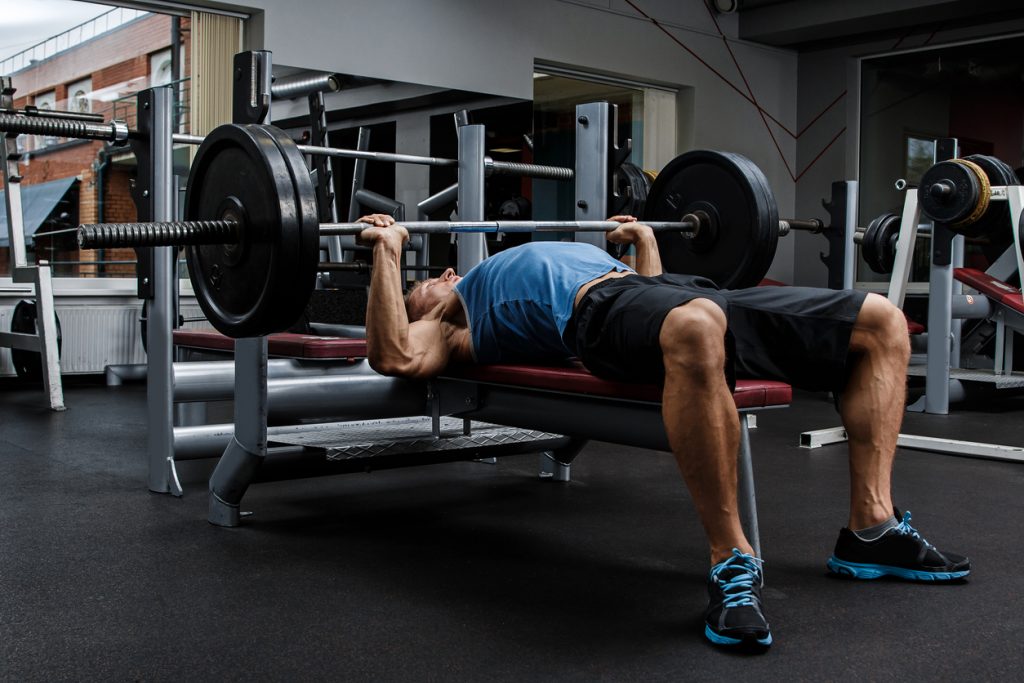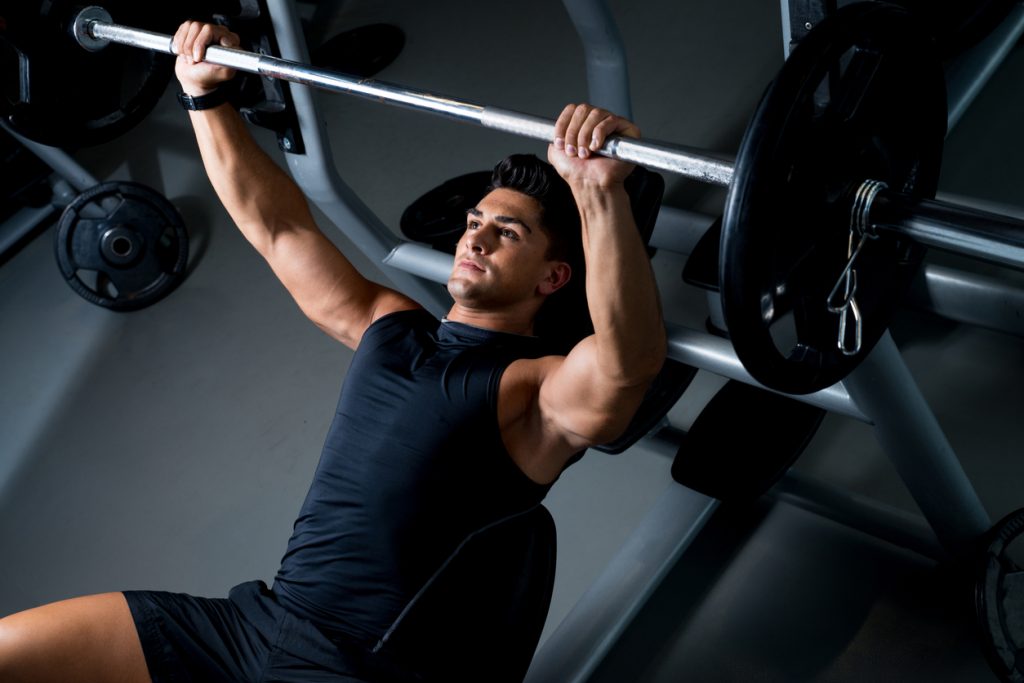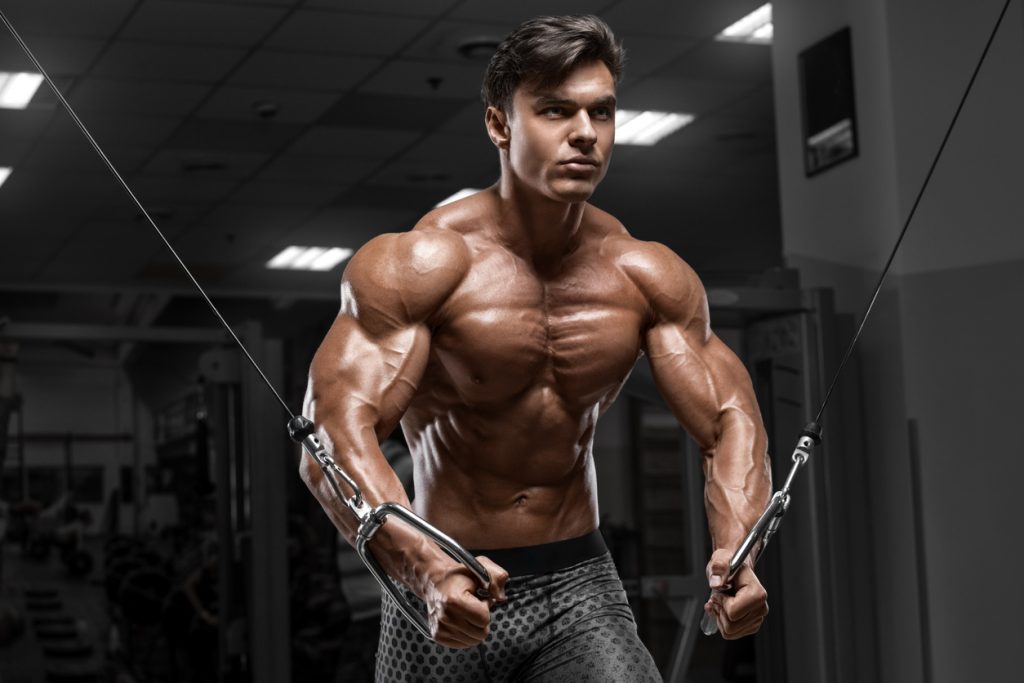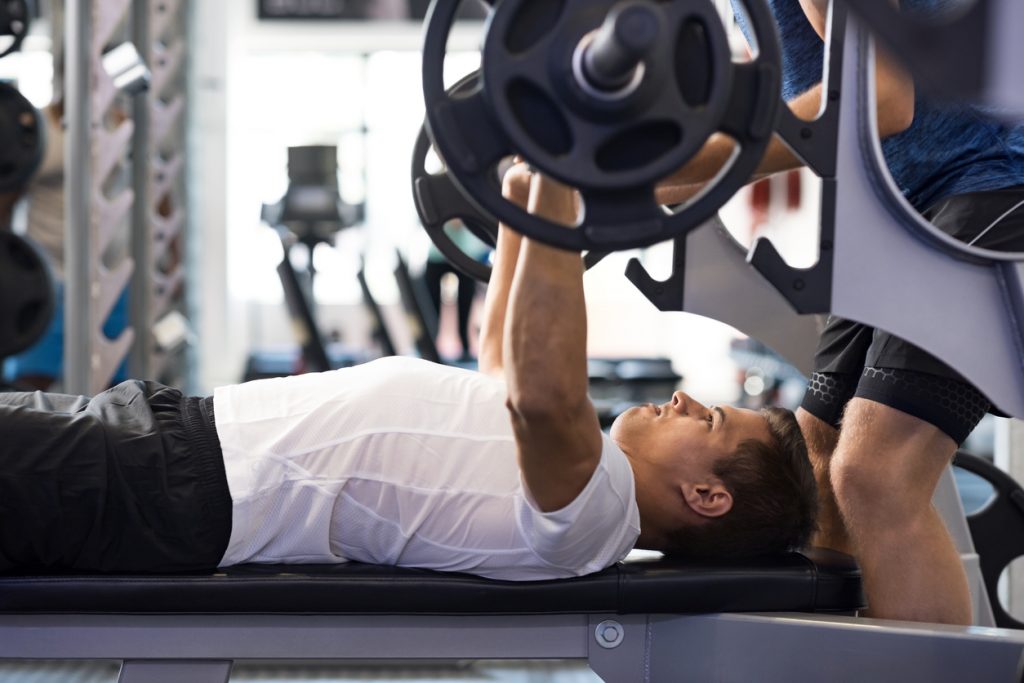The bench press, known as the "dev couch" in France, "bench press" or "DC", is the essential movement in bodybuilding, for beginners and professionals, including Mr. Everyman who practices it in gyms during the pectorals session. But why is this movement so popular and what is it used for? Focus on the subject.
The bench press
The bench press is a poly-articular strength and muscle-building exercise. Known as a complex movement, it is nevertheless considered as one of the "King" movements.
Indeed, any athlete and sportsman wishing to develop a beautiful chest will certainly not spare themselves on this exercise, which brings many benefits for the pectoral muscles, but also for the shoulders and triceps.
Target muscles
From an anatomical point of view, the bench press primarily involves the pectoral muscles, the anterior deltoids and the triceps. In the second plan, we find the coraco-brachial, the biceps, the subscapular, the great serrated and the small pectoral which intervene in synergy with the pectoral, the anterior deltoids and the triceps.
The large dorsal, the large round, the long portion of the triceps and the rhomboids are also solicited. The latter are used more intensively by the expert bench press specialist.
The bench press is used in particular to develop the pectoral muscles and more specifically the medial fascicles. This allows to shape the pectoral and to bulge the torso!
It is important to stress the importance of using the antagonist muscles, i. e. those which carry out the opposite movement, in order to obtain an aesthetic and balanced physique. This also helps to avoid potential shoulder pathologies, i. e. the posterior deltoid, the petit rond, the infraspinatus, the rhomboids and the medial and inferior trapezius muscles.
As the bench press is a repulsion movement, the antagonistic muscles are indeed those that perform the pulling movements, such as the horizontal or vertical pulley pull, the pull-ups or the rowing.
The bench press: a way to test yourself, challenge yourself and compare yourself
The bench press is one of the movements that allow any sportsman to test his limits, to challenge himself and to compare himself, first of all to himself, but also to others. That's right! Which sportsman does not dream to be the strongest in his room on this movement, to lift heavier than everyone else?
The bench press is the movement par excellence to measure the strength of the upper limbs. It should also be noted that this exercise is practiced in competition in Powerlifting (or Athletic Strength). The world record for the raw bench press (without assistance equipment) is 335kg.
However, care must be taken not to overexert yourself. A 100kg individual can do a 110kg repetition, but not a 70kg individual. It is always important to find the balance between the body and the load it is carrying. For example, if an individual is 60kg, a repetition at 75kg is the best strength to body weight ratio (l. l vs l . 2)
The table below allows you to gauge the exercise and compare yourself to yourself, your friends and your training partners:
Example: An individual weighs 80kg. He can lift a maximum of 110kg in one repetition. To calculate: divide 110 by 80, you get 1. 3. His level is "advanced".
The different variations of the bench press
The bench press has the advantage of having many variations. It is impossible to get tired of this movement. Here are some variations with their interest explained:
- Bench press, foot on the ground
Its interest: increased stability with the point of support on the ground.
This positioning is the one to use to lift heavy bars (from 1 to 8 maximum repetitions)
- Bench press with feet raised
Its interest: more muscular work and localized on the pectoral muscles, interesting in long series (from 10 to 15 maximum repetitions)
- Dumbbell bench press
Its interest: increased stretching of the pectoralis major. This movement provokes a different stimulus for a complete strengthening and development of the muscle. Dumbbells are also less stable than the barbell which allows a good recruitment of the deep and stabilizing muscles.
- Bench press tight grip
Its interest: increased solicitation of the triceps
- Declined bench pressIts interest: increased stress on the lower part of the pectoral muscles
- Inclined bench press
Its interest: increased stress on the upper part of the pectoral muscles and the anterior deltoids
- Unilateral dumbbell bench press (one arm)
What it is: Increased trunk and pelvic support




